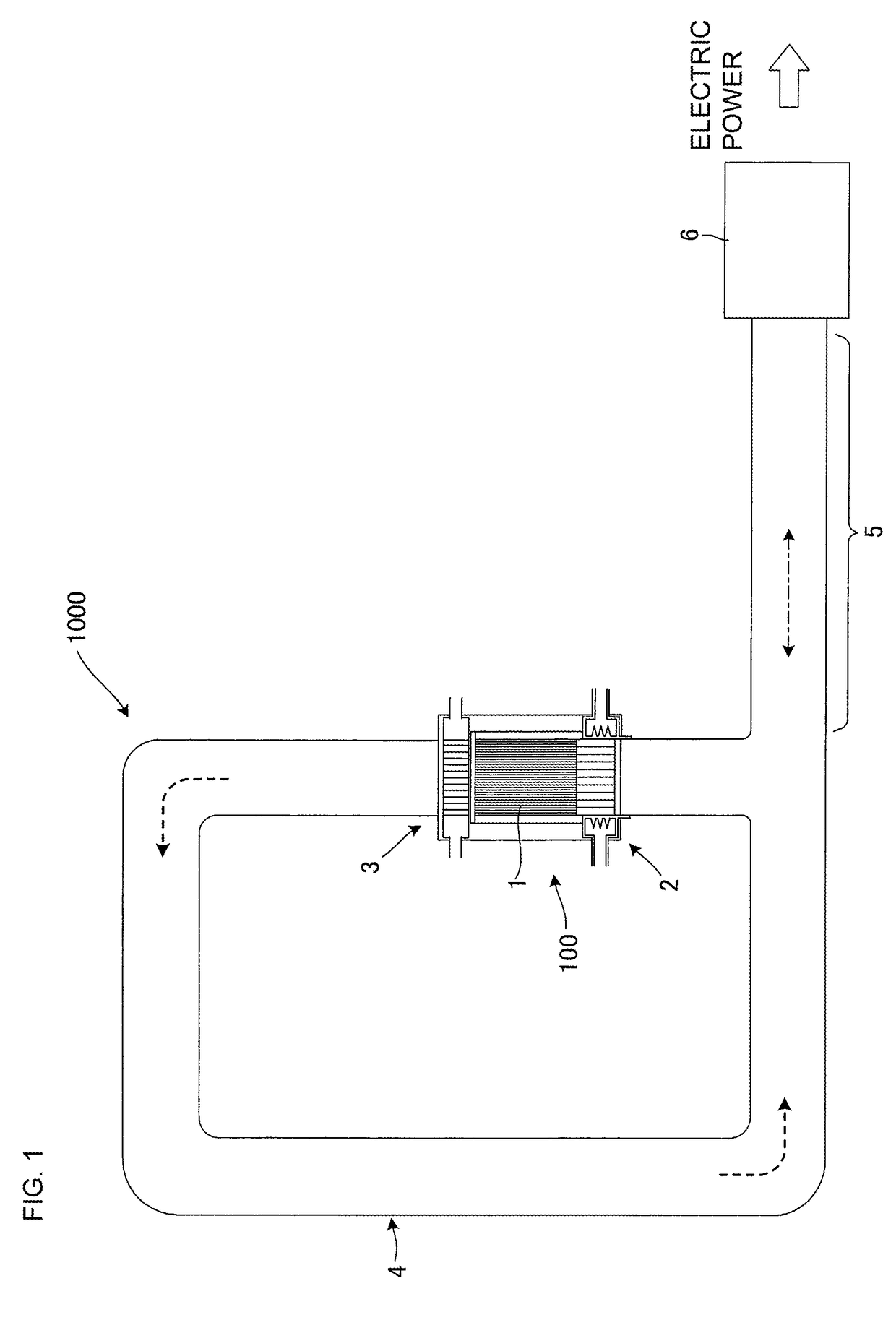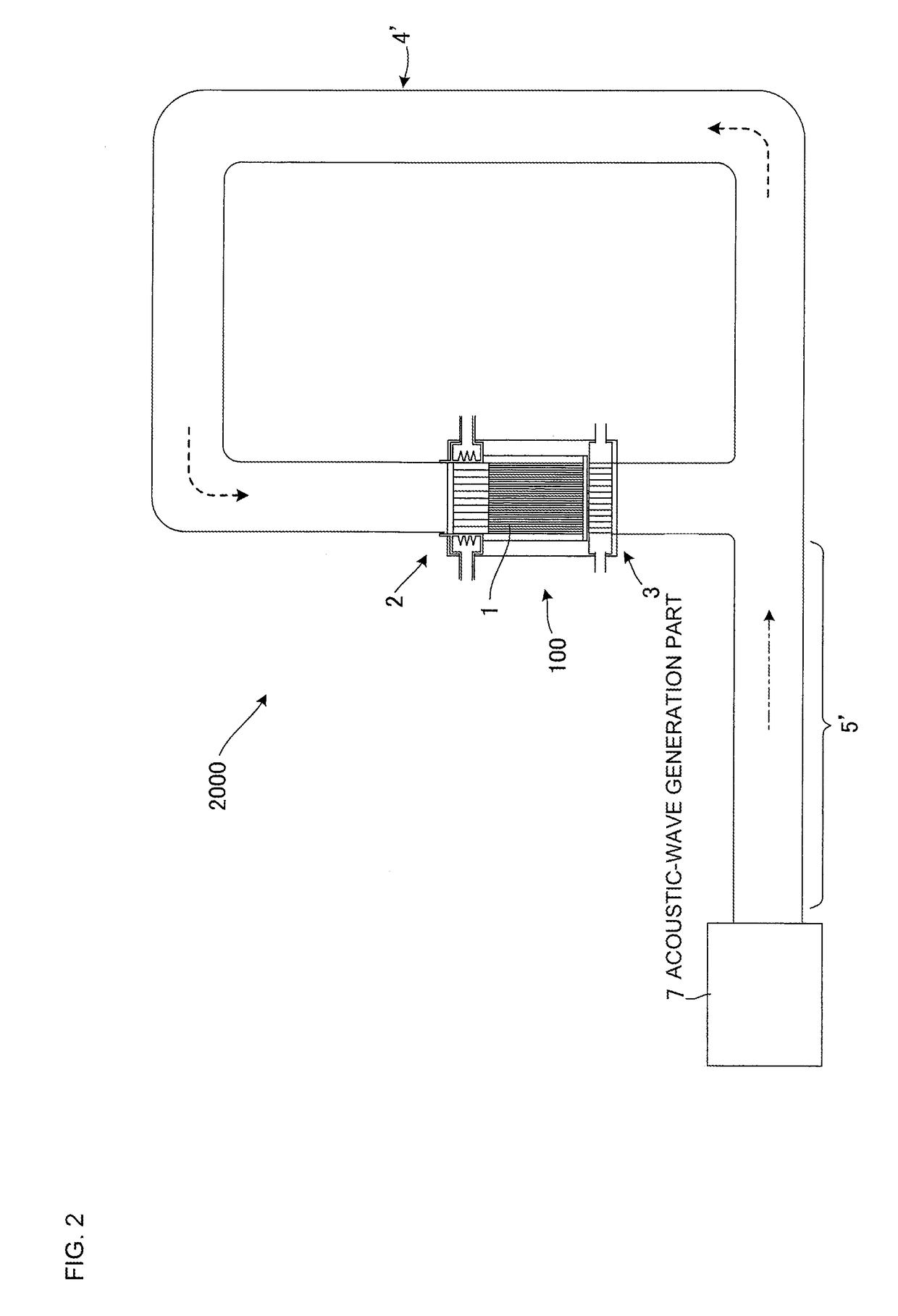Heat/acoustic wave conversion unit
a conversion unit and heat/acoustic wave technology, applied in mechanical equipment, machines/engines, lighting and heating apparatus, etc., can solve the problems of difficult to achieve high energy efficiency and insufficient heat/acoustic wave conversion capability of honeycomb structure for thermoacoustic effect, and achieve the effect of improving energy conversion efficiency and durability
- Summary
- Abstract
- Description
- Claims
- Application Information
AI Technical Summary
Benefits of technology
Problems solved by technology
Method used
Image
Examples
example 1
[0215]In the heat / acoustic wave conversion unit of Example 1, the heat / acoustic wave conversion component 1 was prepared as follows. Firstly, cordierite forming raw material was used as the ceramic raw material, and 35 parts by mass of dispersing medium, 6 parts by mass of organic binder, and 0.5 parts by mass of dispersing agent were added to 100 parts by mass of the cordierite forming raw material, followed by mixing and kneading to prepare a kneaded material. The cordierite forming raw material used included 38.9 parts by mass of talc of 3 μM in average particle size, 40.7 parts by mass of kaolin of 1 μm in average particle size, 5.9 parts by mass of alumina of 0.3 μm in average particle size, and 11.5 parts by mass of boehmite of 0.5 μM in average particle size. Herein the average particle size refers to a median diameter (d50) in the particle distribution of each raw material.
[0216]Water was used as the dispersing medium. Hydroxypropylmethylcellulose was used as the organic bin...
examples 2 , 3
Examples 2, 3 and Comparative Examples 1 to 3
[0248]Heat / acoustic wave conversion units as Examples 2, 3 and Comparative Examples 1 to 3 were manufactured by the same manufacturing method as that of the manufacturing method of Example 1 as stated above except that a die used for extrusion was different in the manufacturing method of the heat / acoustic wave conversion component, where these heat / acoustic wave conversion units were different from Example 1 only in the values of parameters (hydraulic diameter HD and HD / L) relating to the hydraulic diameter HD of the cells among the fourteen types of parameters as stated above.
[0249]Then, the two experiments 1 and 2 similar to those for Example 1 were conducted for these Examples 2, 3 and Comparative Examples 1 to 3.
examples 4 , 5
Examples 4, 5 and Comparative Examples 4 to 8
[0250]Heat / acoustic wave conversion units as Examples 4, 5 and Comparative Examples 4 to 8 were manufactured by the same manufacturing method as that of the manufacturing method of Example 1 as stated above except that the length of extrusion was different during extrusion in the manufacturing method of the heat / acoustic wave conversion component, where these heat / acoustic wave conversion units were different from Example 1 only in the values of parameters (length L, L / D and HD / L of segment) relating to the length L of the segment among the fourteen types of parameters as stated above.
[0251]Then, the two experiments 1 and 2 similar to those for Example 1 were conducted for these Examples 4, 5 and Comparative Examples 4 to 8.
[0252]The following Table 3 shows the experimental results of Examples 1 to 5 and Comparative Examples 1 to 8 as explained above, together with the values of parameters different from those of Example 1.
[0253]
TABLE 3Ce...
PUM
 Login to View More
Login to View More Abstract
Description
Claims
Application Information
 Login to View More
Login to View More - R&D
- Intellectual Property
- Life Sciences
- Materials
- Tech Scout
- Unparalleled Data Quality
- Higher Quality Content
- 60% Fewer Hallucinations
Browse by: Latest US Patents, China's latest patents, Technical Efficacy Thesaurus, Application Domain, Technology Topic, Popular Technical Reports.
© 2025 PatSnap. All rights reserved.Legal|Privacy policy|Modern Slavery Act Transparency Statement|Sitemap|About US| Contact US: help@patsnap.com



